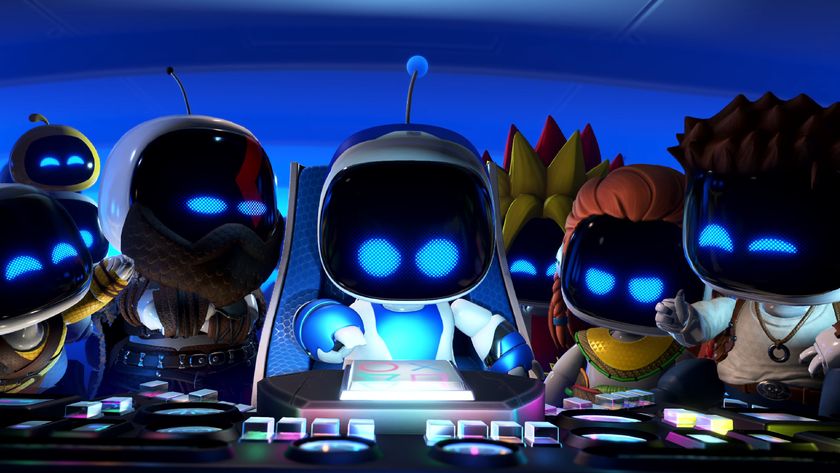Where have all the arcade racers gone?
I want to 'Get Ready'. I want an announcer shouting 'Time Bonus'. I want drifts and crashes, dents and sparks. I want speed, adrenaline and desperate engine notes. And replays. So there’s definitely something wrong when the only car game I can play on my lovely new PlayStation 4 is Need For Speed: Rivals. Sure, it’s more of an arcade-styled game than it is a sim, but it still isn’t what I would call an arcade racer. Just so we’re clear what we’re talking about, I don’t mean a racing game that was originally designed as an coin-operated arcade game. Arcade racers take the essence of those beasts and have most, or all, of the following characteristics:
1. The race is against the clock as well as other cars
OutRun, Sega Rally, Daytona, Ridge Racer, Manx TT Superbike, Super Hang-On, Virtua Racing, Sega Touring Car Championship… all of them have a time limit counting down while you race. What does that add? Urgency. Excitement. Not to mention the sense of reward when you cross a checkpoint with zero on the clock and keep your race alive for another 15 seconds. When the count-down’s on the screen, every second of gameplay is precious. Take it away and the experience immediately loses some vitality. True fact.
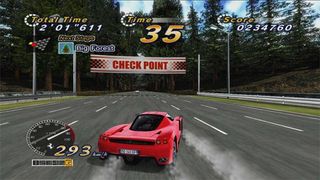
2. Larger-than-life graphics
Forget photo-realism. Who wants that? The great thing about arcade racing games is that realism can go out of the window, or at least be augmented until it’s better than real life. I’m talking formations of jet planes flying overhead, massive theme park pirate ships over the track, fields of windmills, underwater pipe runs where you can see fish, coral and whales through the glass. Loop-the-loops. One-arm bandits you can play by hitting the view-change button. It's called 'imagination'.

3. Multiple viewpoints
Sure, sims like Forza 5 and Gran Turismo 6 have multiple views, but they don’t make a big deal out of it. Flicking between four smoothly-transitioned views in Virtua Racing was easily as much fun as playing the game itself back in the early 1990s. We may not be as riveted by 3D polygonal visuals as we were back then, but there’s no reason they can’t feature. Well, apart from Sega’s patent, but if not even Sega’s using it, what’s the point?
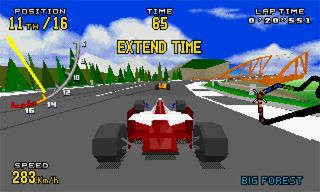
4. Incredible track design
Real world tracks need not apply. Arcade racers have their own tracks to zoom around. And when the rules are out of the window, that means every single corner can be a masterpiece of gameplay direction. Old arcade racers (that actually came from arcades) may only have had two or three circuits to play, but they packed more into one lap than most games do their entire roster. Also, I have to say, Ridge Racer’s original track is so good it never gets dull. Not ever.
5. Massive crashes
Arcade-style games are rarely officially licensed, which means the cars in them can be smashed to kingdom come. And seeing as real-life rules don’t apply, who says your car can't be magically fixed and reset to the track so you can carry on immediately? Daytona’s flipping Hornet looks amazing on Dreamcast, especially with smoke pouring from the engine cover as the car bounces back onto its wheels. And Burnout 3 here is still gorgeous. Imagine what the new generation could do for arcade car crashes.
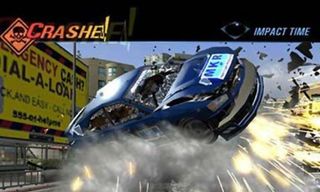
6. High scores
True arcade racers aren’t even necessarily about the best lap times. They’re also about the best scores. OutRun 2 is a brilliant example of this, rewarding you for drafting your opponents, avoiding the grass and generally being awesome. Topping a high score table--even a local one--is a brilliant feeling that is perfectly suited to modern-day social integration. Whether simple screenshots or filtered leaderboards, all are suited to arcade-style play.
Sign up to the GamesRadar+ Newsletter
Weekly digests, tales from the communities you love, and more
7. 60 frames per second screen refresh rate.
There’s a reason 60fps is known as ‘arcade speed’. Sure, those mid-‘90s home conversions mostly settled for 30fps, but there’s no denying a wonderfully smooth and chunky 3D experience is where it’s at and should be a staple for arcade racers.
Need I go on? Oh, well we should give sound a mention (you have to watch this)...
In all seriousness, the game I have just described via the points above simply doesn’t exist on the new generation of consoles. Sure, Need For Speed ticks a lot of those boxes, but the sprawling environment is just too loose-feeling. It’s not tight enough to be a true arcade racer. It’s a game world you react to, not one small enough to truly master.
If you look back through the generations, the quantity and quality of arcade racers has diminished as time has gone on. Xbox 360 and PS3 have a few good ones (and some exceptional HD ports), and PS2 before that had some crackers: Namely the underrated Shox from EA, Downforce from Titus and, of course, the Burnout series.
But even they pale in comparison to the 32-bit generation’s offerings. Obviously the biggest reason for that is that arcades themselves were still flourishing in the mid-1990s, so home console ports of exciting games were equally exciting because the thought of having this arcade experience in your own living room was unimaginable.
It's no coincidence Ridge Racer was used to launch every Sony console to date except for PS4. Most major consoles have used an arcade racer to showcase their new graphical tech. Heck, even the Wii had Excite Truck (which is absolutely brilliant once you get to know how it works).
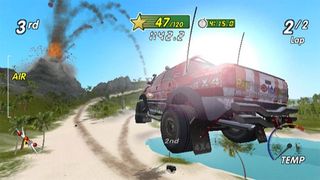
The key element all the best 1990s arcade racers have is longevity. Look at the best of them and you’re looking at a core experience that can sustain not only an ultra-exciting £1-a-go first-time experience, but also the 1,000th. The core element of racing games is that you can always go faster. Even when you think you’ve found the perfect line and completed the perfect lap, there is always somewhere you can improve.
That’s what’s missing from modern games. The design philosophy seems to be to script your experience entirely, from the moment you push the Start button (or whatever the modern-day equivalent may be, next-gen be damned...) to the moment the credits roll.
By comparison, arcade racers script only your experience for the first lap, in that there’s almost always a shallow corner first to get you used to the steering in safety, then a slightly sharper corner to teach you about the racing line, then a much harder corner that either requires you to apply the brakes to navigate safely, or to activate an advanced control mechanic to get the fastest line. After that, lap two is yours to explore for yourself how you can do better.

Is it the brakes that are a problem? Are modern gamers really expected to be so stupid they just want to hold accelerate? Even Sonic & All-Stars Racing Transformed eschews a left-trigger brake button in favour of a drift button. Hold it down and you can turn sharper (and you’re rewarded with a speed boost for doing it right). It’s the logical progression of OutRun 2’s drift mechanic, which in turn was a simplified version of Daytona USA’s drift mechanic that required use of a manual gearbox in order to get the best out of it.
That's something most people will never experience, as they don’t even like to use the brakes. And therein lies the problem. There's nothing wrong with accessibility, but the more game developers dumb down the controls, the more gamers will expect to be spoon-fed.
Arcade racers should fit the modern gaming model just fine. In most, you can have fun by just accelerating and steering. You can upload your lap times to the leaderboards and social networks and compete against your friends, either in time attack or in online races. Trackside scenery can now be entirely made up of physics objects. Cars can be destroyed spectacularly and you can share your best smashes to YouTube or Facebook or Twitch or whatever. New tracks can be sold periodically as DLC. Everything that arcade racers stand for suggests they were made to be played on modern consoles.
So… where the hell are they?!
Justin was a GamesRadar staffer for 10 years but is now a freelancer, musician and videographer. He's big on retro, Sega and racing games (especially retro Sega racing games) and currently also writes for Play Magazine, Traxion.gg, PC Gamer and TopTenReviews, as well as running his own YouTube channel. Having learned to love all platforms equally after Sega left the hardware industry (sniff), his favourite games include Christmas NiGHTS into Dreams, Zelda BotW, Sea of Thieves, Sega Rally Championship and Treasure Island Dizzy.



